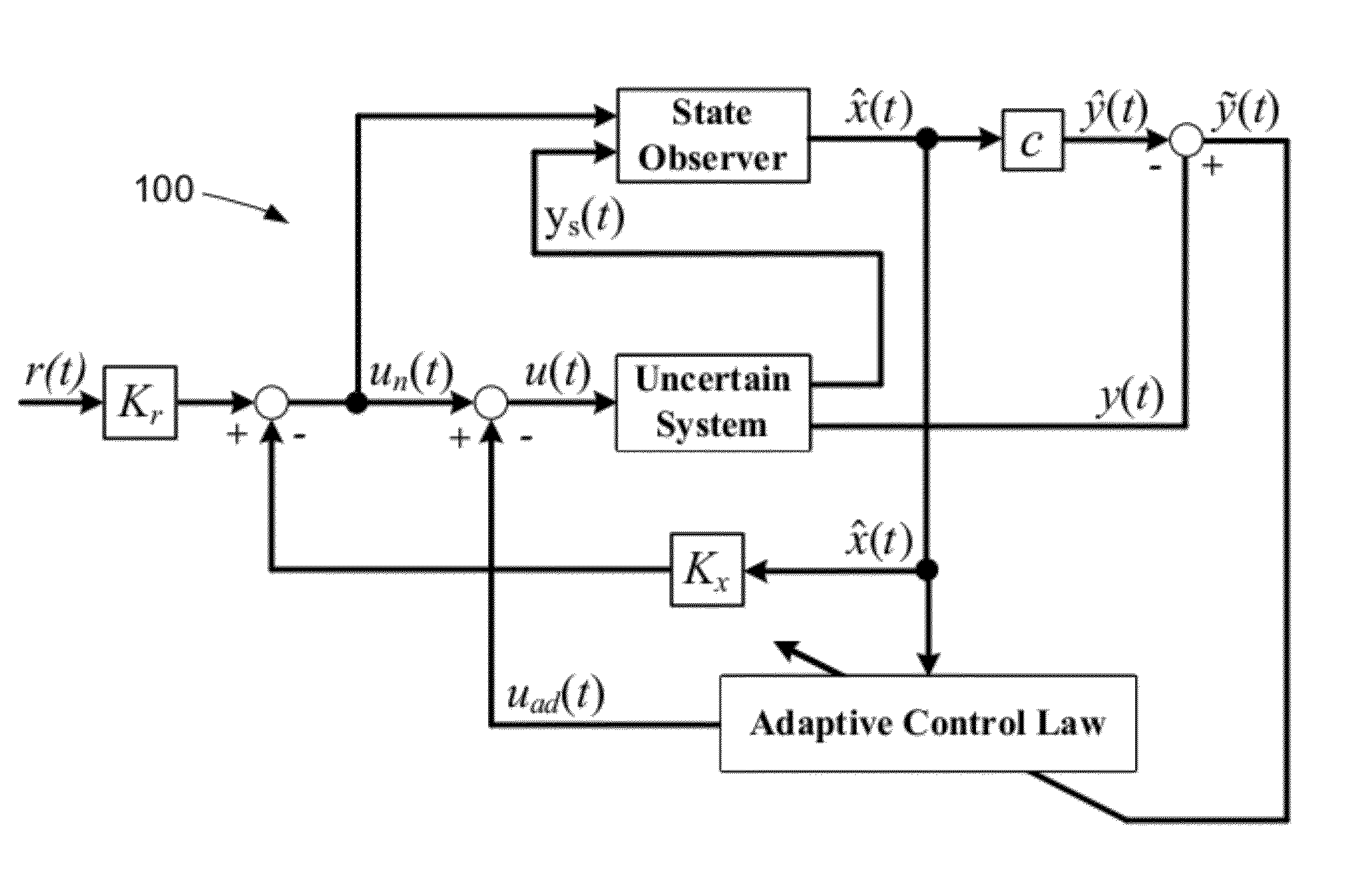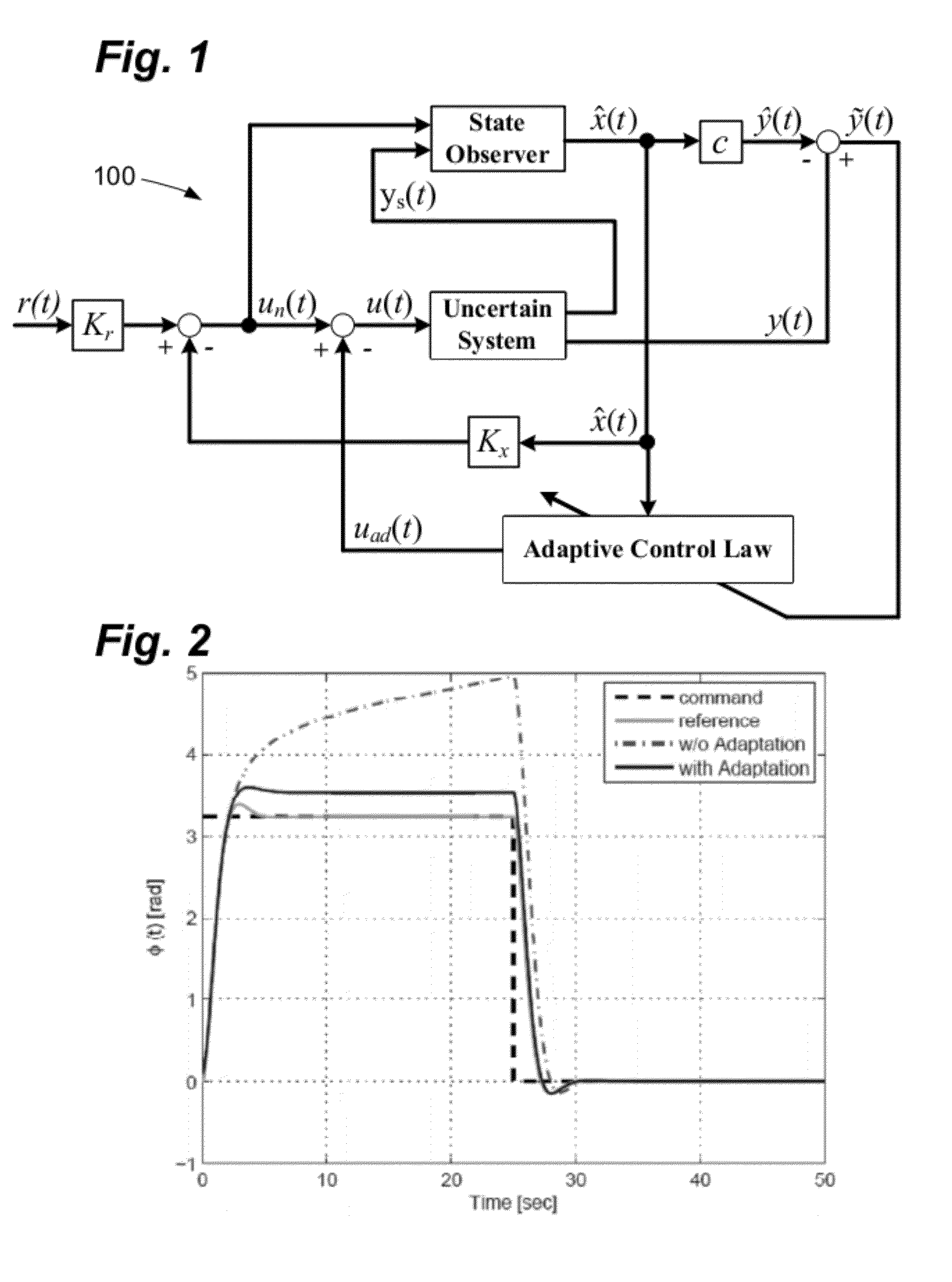Systems and methods for parameter dependent riccati equation approaches to adaptive control
a technology of adaptive control and parameter dependence, applied in adaptive control, process and machine control, instruments, etc., can solve the problems of reducing the accuracy of the whole state of the process or system under control, reducing the accuracy of the whole state of the process or system, and reducing the complexity of the adaptive control system. , to achieve the effect of avoiding high gains, minimizing complexity, and avoiding high gains
- Summary
- Abstract
- Description
- Claims
- Application Information
AI Technical Summary
Benefits of technology
Problems solved by technology
Method used
Image
Examples
examples
[0069]The derivative-free weight update law of Equation 7 can be illustrated using a model of wing rock dynamics. Wing rock can be a nonlinear phenomenon in which an aircraft exhibits oscillations in roll at high angles of attack. A two-state model for wing rock dynamics can be written in the form given by Equations 10a-10b below, where w(t) represents sensor noise:
[x·1(t)x·2(t)]=[0100][x1(t)x2(t)]+[01][u(t)+Δ(t·x(t))]Equation10ays(t)=[10][x1(t)x2(t)]+w(t)Equation10b
[0070]The modeling uncertainty of the control system can be represented by Equation 11:
Δ(x(t))=b0+b1x1(t)+b2x2(t)+b3|x1(t)|x2(t)+b4|x2(t)|x2(t)+b5x13(t) Equation 11
[0071]In this example, constant aerodynamic coefficients are chosen as b0=0, b1=−0.0186, b2=0.0152, b3=0.6245, b4=−0.0095, and b5=0.0215. In Equations 10a-10b and 11, x1(t) represents the roll angle, and x2(t) represents the roll rate. The existing controller gains are Kx and Kr. The existing state observer gain is L. A bias term and five sigmoidal basis fun...
PUM
 Login to View More
Login to View More Abstract
Description
Claims
Application Information
 Login to View More
Login to View More - R&D
- Intellectual Property
- Life Sciences
- Materials
- Tech Scout
- Unparalleled Data Quality
- Higher Quality Content
- 60% Fewer Hallucinations
Browse by: Latest US Patents, China's latest patents, Technical Efficacy Thesaurus, Application Domain, Technology Topic, Popular Technical Reports.
© 2025 PatSnap. All rights reserved.Legal|Privacy policy|Modern Slavery Act Transparency Statement|Sitemap|About US| Contact US: help@patsnap.com



